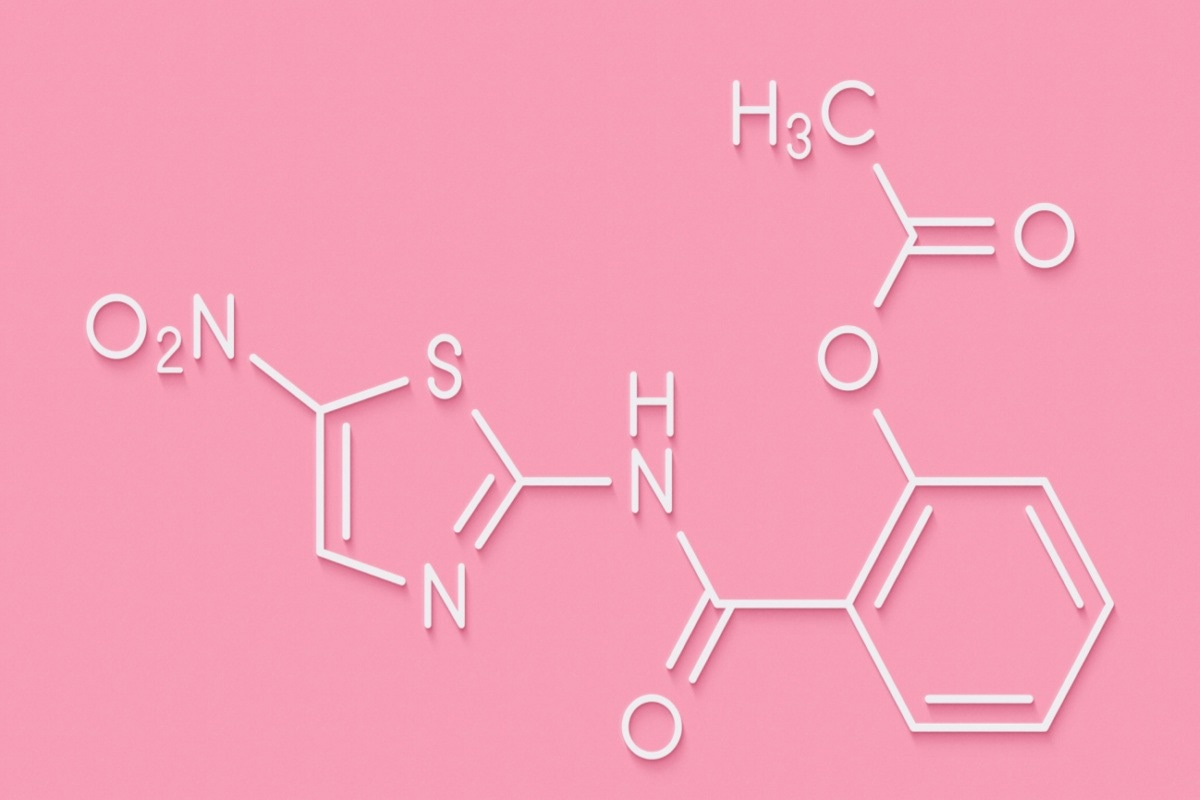In a recent study posted to the bioRxiv* pre-print server, researchers evaluated the activity of nitazoxanide against human coronaviruses (HCoVs).
 Study: Nitazoxanide is a potent inhibitor of human seasonal coronaviruses acting at postentry level: effect on viral spike glycoprotein. Image Credit: StudioMolekuul/Shutterstock.
Study: Nitazoxanide is a potent inhibitor of human seasonal coronaviruses acting at postentry level: effect on viral spike glycoprotein. Image Credit: StudioMolekuul/Shutterstock.

 *Important notice: bioRxiv publishes preliminary scientific reports that are not peer-reviewed and, therefore, should not be regarded as conclusive, guide clinical practice/health-related behavior, or treated as established information.
*Important notice: bioRxiv publishes preliminary scientific reports that are not peer-reviewed and, therefore, should not be regarded as conclusive, guide clinical practice/health-related behavior, or treated as established information.
Background
Identified first in the 1960s, HCoVs caused only mild human infections until 2002. The 2022 SARS and 2012 Middle East Respiratory Syndrome (MERS) outbreaks resulted in mortality rates greater than 10% and 35%, respectively. The seventh HCoV, severe acute respiratory syndrome coronavirus 2 (SARS-CoV-2), posed a far more serious threat to public health and claimed over 6.3 million lives by July 5, 2022.
Generally, seasonal HCoV (sHCoV) infections contribute to around 15 to 30% of common cold cases but are self-limiting. However, sometimes sHCoVs cause severe lower respiratory infections and enteric and neurological diseases. Currently, no specific treatment is available for such severe sHCoV cases.
All sHCoVs use different host cell receptors; however, all initiate binding to host cells via the spike (S) glycoprotein anchored in their viral envelope. Nitazoxanide, a second-generation thiazolide, has emerged as a new class of broad-spectrum antiviral drugs that acts at the postentry level to interfere with the S maturation. Also, its active metabolite tizoxanide demonstrated efficacy against several ribonucleic acid (RNA) viruses, including rotavirus, hepatitis C, and influenza, in clinical trials.
Wang et al. reported that nitazoxanide inhibited SARS-CoV-2 replication in Vero E6 cells at EC50 of 2.12 µM. Other studies validated these observations in different types of cells, including human lung-derived Calu-3 cells. Several studies have pointed out nitazoxanide's usefulness and clinical benefits of nitazoxanide in coronavirus disease 2019 (COVID-19). However, the molecular basis of its antiviral activity against human coronaviruses is not yet understood.
About the study
In the present study, researchers investigated the potency of nitazoxanide against three HCoVs, the HCoV-229E and HCoV-NL63 (genera alpha-coronavirus), and the HCoV-OC43 (genera beta-coronavirus).
They used cell culture with high selectivity indexes and half-maximal inhibitory concentration (IC50) values between 0.05 and 0.15 µg/ml. First, the team inoculated human lung MRC-5 and monkey kidney LLC-MK2 cells with HCoVs 229E, OC43, and NL63 at the multiplicity of infection (MOI) of 0.1 median tissue culture infectious dose (TCID50)/cell. Then, they treated these cells with different concentrations of nitazoxanide following the virus adsorption period.
For HCoV-NL63, they removed the drug 120 hours after infection. Likewise, they removed the drug 48 hours and 120 hours after infection for HCoVs 229E and OC43, respectively. Next, they determined viral titers at 48, 96, and 120 hours after infection in the supernatant of infected cells using TCID50 assay based on viral RNA quantification.
Furthermore, the researchers compared the antiviral activity of nitazoxanide with other drugs, including remdesivir, chloroquine, and ribavirin. They used the same concentration (i.e., 3 µM) of these drugs starting after virus adsorption.
Lastly, they assessed the effect of nitazoxanide on levels of the viral nucleocapsid (N) and spike (S) proteins. They used the immunoblotting technique to analyze the cells infected with 0.5 TCID50/cell of HCoV-OC43 at 24 hours post-infection (hpi) and infectivity assay to determine the culture supernatants.
Study findings
The authors observed that nitazoxanide showed promising antiviral activity against all three HCoVs in a dose-dependent manner, with virus yields and IC50 values in the sub-micromolar range.
While nitazoxanide, tizoxanide, and remdesivir showed similar antiviral activity against all three HCoVs. Conversely, chloroquine and ribavirin were ineffective following the viral infection. At the molecular level, nitazoxanide interfered with the S-glycoprotein maturation. When removed before infection, NTZ pretreatment did not significantly affect HCoV replication. Following infection, nitazoxanide treatment effectively reduced infectious viral production by roughly three-fold in both HCoV models, without affecting cell viability, with a median lethal dose (LD50) value greater than 50 µg/ml.
Since NTZ treatment during virus adsorption did not affect HCoV replication, it indicated that nitazoxanide acted at a postentry level; additionally, it did not affect HCoVs adsorption, entry, or uncoating. Intriguingly, NTZ treatment at more than 0.1 µg/ml concentration altered S protein's electrophoretic mobility pattern. However, the authors observed no significant differences in N and S protein levels in NTZtreated cells.
Conclusions
In their previous studies on influenza and parainfluenza viruses, the researchers deduced similar results for nitazoxanide. They showed that the drug impaired terminal glycosylation of influenza hemagglutinin and paramyxovirus fusion protein. Additionally, it impacted intracellular trafficking of the class-I viral fusion glycoproteins. In the current study, the researchers confirmed the effect of nitazoxanide in two different actively-replicating HCoV models, where human cells transfected with plasmids encoded different SARS-CoV-2 S variants.
Together, these findings confirmed that nitazoxanide hampered the S protein maturation at an endoglycosidase-H-sensitive stage, thus preventing its final processing, which hindered progeny virus particle formation. Indeed, nitazoxanide is a potent broad-spectrum anti-coronavirus drug.

 *Important notice: bioRxiv publishes preliminary scientific reports that are not peer-reviewed and, therefore, should not be regarded as conclusive, guide clinical practice/health-related behavior, or treated as established information.
*Important notice: bioRxiv publishes preliminary scientific reports that are not peer-reviewed and, therefore, should not be regarded as conclusive, guide clinical practice/health-related behavior, or treated as established information.